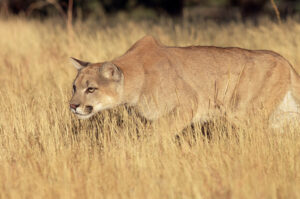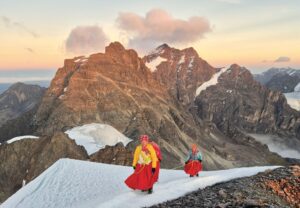Some years ago, I spent a month on the island of Kunashir, in Russia’s Kuril Islands. Kunashir lies just north of Japan (and before World War II, it belonged to Japan). Like Japan, it’s on the Pacific Ring of Fire.
A couple of times a week, tremors shook the house where I was staying when I was not camping. People slept with their important documents beside their beds, so they could grab them before running outside if a Big One came in the middle of the night. A precaution borne of experience: A few years earlier, an 8.3 quake had totally flattened Yuzhno-Kurilsk, the island’s only town.
A Russian friend, Valera Malakhov, and I were there to climb and explore the four volcanoes on the island. The most benign of them, Golovino, wasn’t even a volcano anymore, just a giant blown-out caldera filled in with startlingly green vegetation, including bamboo and an impenetrably stiff subarctic spruce called slanyk in Russian. It was similar to what Newfoundlanders call tuckamore, only even harder to get through.

Boiling Lake: looks innocuous but not a great place to swim. Warm Lake begins about 50m to the left, out of the picture.
Russian roulette at Boiling Lake
The most interesting part of Golovino was the area around two adjacent lakes, a big one called Warm Lake and a small one called Boiling Lake. Warm Lake wasn’t really warm, it was cool. And Boiling Lake wasn’t boiling, it was lukewarm. Most of the time, that is.
At unpredictable intervals, columns of superheated steam would shoot up from down below, making the lake intermittently true to its name. On a dare, bored Russian soldiers from nearby border posts would occasionally try to swim the half-kilometre across Boiling Lake. A metal sign by the lakeside, corroded by the acidic air, commemorated those who lost their lives in this peculiar form of Russian roulette.
Valera and I spent most of our time on the sandy beach fringing Warm Lake. The air tasted less corrosive there. We were sitting on the sand when I reached over for something and suddenly jerked my hand back. Initially, I thought that a bee had stung me, but it wasn’t that: Something had burned me.

The low blue flame is invisible in the daylight, but the bubbling black area, upper right, marks the edge of the fire.
How does sand catch fire?
I couldn’t see anything until I looked a metre away and noticed a thin, black, bubbling edge. The sand itself was on fire. On closer inspection, I saw a low blue flame, almost invisible in the sunlight. The flame spread gradually and the bubbling black edge expanded outward.
Afraid we’d done something to cause a fire, which might spread to the plants behind the beach, we snuffed out the flame by kicking sand on the bubbling edge and then inward on the flame. The fire had melted the sand into a coherent piece of thin slag.

Valera Malakhov holds a piece of slag from the burned beach.
Confused, we moved to a different part of the beach. We were about to sit down again when we noticed another little sand fire moving toward us. Again, we put it out. Then we left the beach for the relative safety of our campsite some distance away.
Back home, I asked a couple of volcanologists about sand catching fire, but they’d never heard of it. We weren’t smoking or having a campfire. I could see bits of sulfur in the sand, but how did the fire begin? The surface of the sand was no hotter than any sand would be in cool sunshine. Did the quartz in the sand act as a magnifying glass, focusing the sun on the flammable material? Does this just happen on sunny days? Do fires start often, and if so, why had it not spread beyond the beach? Why was the entire beach not crusted over into that greyish slag? Does this happen anywhere else in the world? I remain clueless. Perhaps one of ExplorersWeb’s knowledgeable readers can suggest an explanation.





